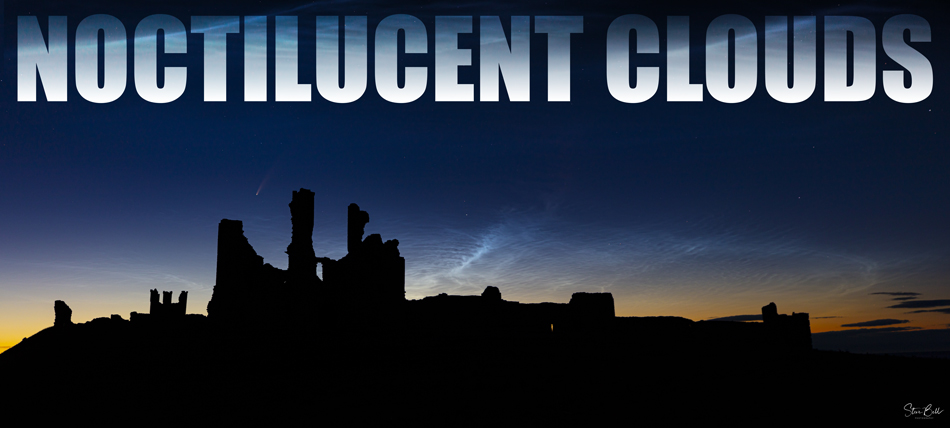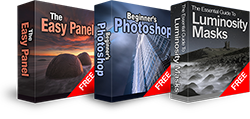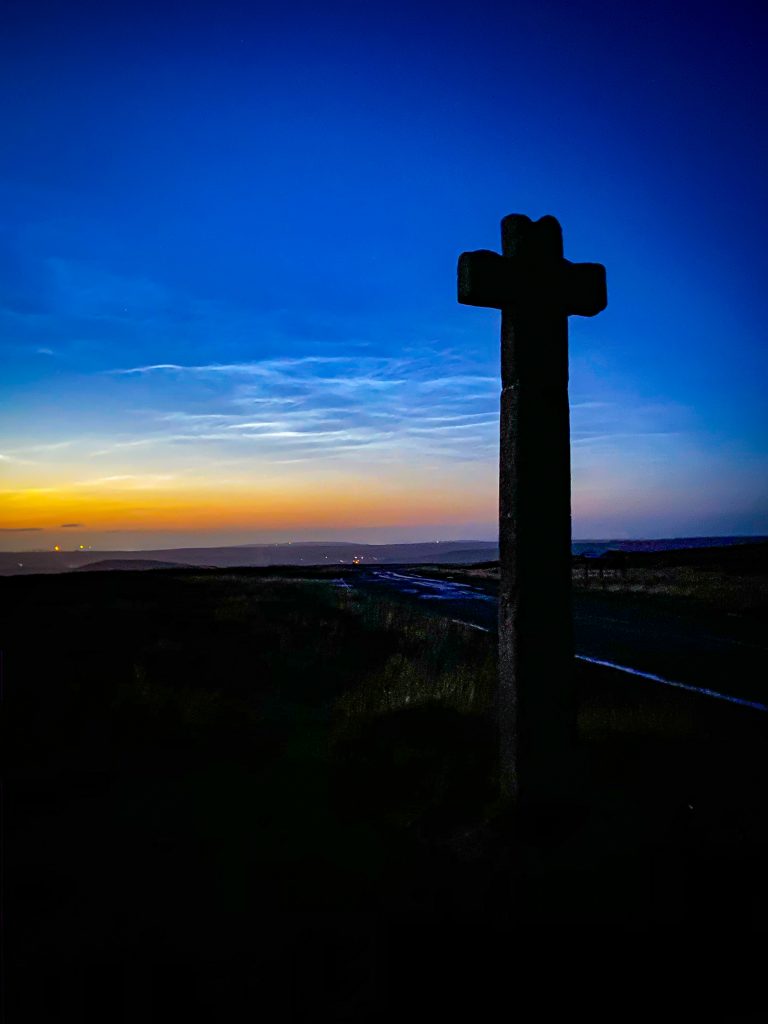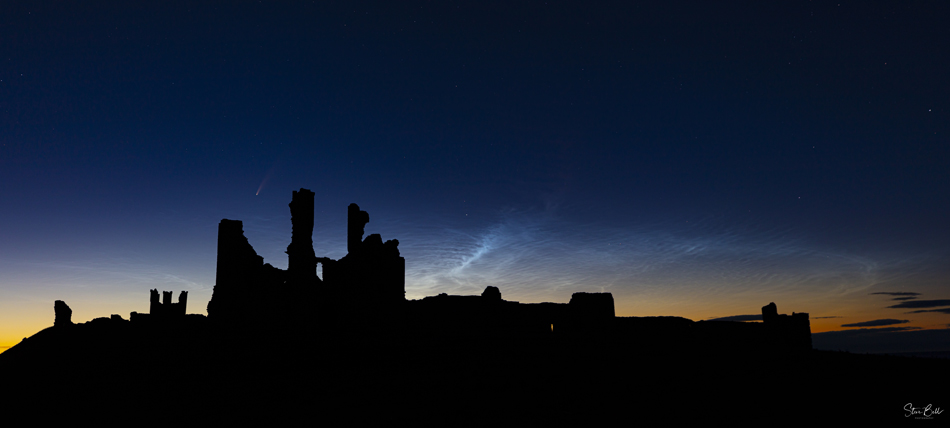Noctilucent Cloud Season Returns
This Noctilucent Cloud Season Returns Article is by Steve Bell. If you would like to write for us, please read here.
Have you ever looked up at the night sky during the summer months and seen streaky white clouds shining like it was the middle of the day? If the answer is yes, then you have probably seen the illusive Noctilucent Clouds (NCL’s)

It is only usually possible to see and photograph them from May through until late July and it’s all down to the position of the sun below the horizon. NCL’s are the highest of all the clouds that we have at a height of over 50 miles or 80km. It is this hight that makes it possible for us to observe them.
Where To Find Noctilucent Clouds
Let’s have a quick look at the diagram below. As you can see the observer is standing in semi darkness with the sun below the horizon. Yet the clouds due to their altitude are still in daylight. With some simple physics we can see that the sunlight bounces off the ice crystals in the clouds at 90 degrees and down to where we are standing.

-Tutorial Continued Below-
How To Find Noctilucent Clouds
The clouds usually form over the poles and unfortunately a yet, there is no way of accurately forecasting them. Obviously, you need a little bit of luck and clear skies to in with a chance. However, when you are in the right place at the right time then they come a very close second to the Aurora in my opinion. Little wonder then that for photographers who chase the Aurora’s during the dark months that our attention switches to the NCL’s during the summer.
If you have read some of my earlier blogs on Shutter Evolve you will know that I use the fantastic Glendale Aurora App, which has been created by Andy Stables up on the Isle Of Skye to get accurate predictions of the Aurora and also report any sightings be this with the naked eye or on camera.
The great news is that during NCL season, then the app also allows you to report sightings of the clouds. It doesn’t take long for one sighting to get photographers out there and the reports usually come flooding in. The better news is that you don’t need to be in the far North of Scotland to see them either. Most year’s there are nights where they are be seen all over the UK and at similar latitudes across the world.
Unlike the Aurora, you can always see them with the naked eye. Here in the UK, it is a very rare occurrence when you can see the Northern Lights dancing in the skies with your very own eyes. Yet it is possible to photograph them on many more occasions due to the light gathering capabilities of your camera. With NCL’s the opposite is true.
How To Photograph Noctilucent Clouds
So, onto photographing them. All you will need is a camera, lens and tripod. You don’t need to worry about the rotation of the earth like we do with the stars (although if any are visible you might need to photoshop them out if you are shooting the clouds at longer focal lengths). With a standard wide-angle lens, you will be able to add some foreground interest in your composition. The clouds are also great subjects for creating time lapses of as they twist and dance around the sky. They usually remain visible for long periods too, which allows you to really compose and refine your images.
Camera Settings
Settings wise then I usually start off with a focal length of anywhere between 16 – 35mm, usually a shutter speed of between 4 – 10 seconds will be ample, iso in to 100 – 800 range and f8 aperture. It’s getting out there and finding the clouds which is the hardest part. Once they are there then you can make adjustments to your settings to get the cleanest and sharpest image.
As I have mentioned, it’s not possible to forecast the NCL’s, however once again, Glendale Aurora comes to the rescue in that it will let you know when it would be possible to view them if conditions allow. This at least lets you know, what time you would need to set your alarm for!
Up here in the North of England, I head out on regular occasions at about 9.00pm to shoot sunset and then into blue hour, staying out all the way through the night and shooting the morning blue hour, sunrise and golden hour before heading home. This has proved to be the most successful way of shooting the NCL’s and in my opinion it’s one of the best ways to spend a summers evening.
Photo taken by Steve Bell of Steve Bell Photography Landscape & Dark Sky Photography Tuition



